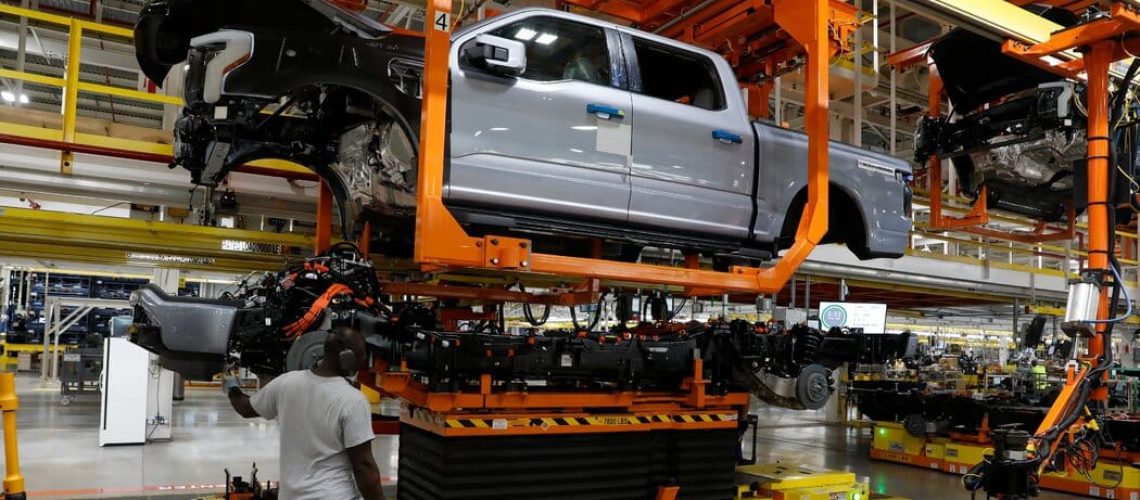The Biden administration announced on Monday progress on 15 large renewable energy projects, an apparent effort to project confidence in an industry that is facing steep challenges.
All of the developments are on federal lands in the West, including a geothermal lease sale across 12 counties in Northern Nevada, a new transmission line west of Phoenix, and the completed construction of more than 800 megawatts of solar power in Southern California.
“This administration is taking an all-hands-on-deck approach toward ambitious clean energy goals,” said Deb Haaland, secretary of the Interior Department, which oversees public lands.
The administration wants to issue permits for 25 gigawatts of renewable energy on public lands by 2025, enough to power about five million homes. It’s a target that could be surpassed if all the projects announced on Monday reach completion.
The announcements come at a time of setbacks for offshore wind farms. Orsted, a Danish developer, recently announced that it was scrapping two planned wind farms off the coast of New Jersey, citing problems with supply chains, global inflation and rising interest rates.
Avangrid, a subsidiary of a Spanish utility company, Iberdrola, terminated a long-term power purchase agreement for the Park City Wind project off the coast of Massachusetts. Over the summer, Avangrid pulled out of another project with Commonwealth Wind for an offshore farm south of Martha’s Vineyard.
According to ClearView Energy Partners, a consulting firm, 24 percent of offshore wind capacity that has been contracted is now at risk. The cancellations threaten the administration’s goal of deploying 30 gigawatts of offshore wind by 2030.
The troubles with renewable energy extend to electric vehicles. Mary Barra, the chief executive of General Motors, acknowledged a “bumpy” transition as the company announced that it would not meet its target of building 100,000 electric vehicles in the second half of this year and another 400,000 in the first six months of 2024. Honda scrapped a $5 billion deal with General Motors to build an affordable electric vehicle. Ford Motor announced that it was delaying the start of production at one of its two electric vehicle battery plants in Kentucky.
Republicans who oppose a transition away from fossil fuels said the headwinds proved that clean energy is not economically viable.
“President Biden’s green energy obsession is driving up the cost of living and undermining the American economy,” Senator John Barrasso, Republican of Wyoming, said. “Even billions of dollars in taxpayer-funded loans aren’t enough to make his green economic nightmare work.”
Kevin Book, managing director of ClearView Energy Partners, said the Inflation Reduction Act that President Biden signed last year to invest $370 billion in clean energy was not enough to overcome inflation and rising interest rates.
But John Larsen, a partner at Rhodium Group, a nonpartisan energy research firm, called economic challenges “a bump in the road” and noted there were bright spots.
A record number of 300,000 electric vehicles were sold in the United States in the third quarter of 2023, about 8 percent of all vehicle sales. Manufacturers are projected to sell one million electric vehicles this year, another record, Mr. Larsen said.
Clean electricity installations also hit a record of nearly 6 gigawatts this year. That’s up 13 percent from a year ago, he said. And a report that Rhodium did with the Massachusetts Institute of Technology found that $213 billion had been invested in clean energy manufacturing and deployment in the United States between mid-2022 and mid-2023, a 37 percent increase from the previous year.
“So far on net, 2023 is still looking promising,” Mr. Larsen said. “If we’re having the same conversation again in a year, that would be troubling.”
The Interior Department’s announcement highlighted two major solar projects that are now running: a 500-megawatt photovoltaic facility in Riverside County, Calif., that can power 146,000 homes and the nearby Arlington Solar Energy Center that is generating 364 megawatts to power 111,000 homes. Both projects include battery energy storage.
This week the Bureau of Land Management, the agency under the Interior Department that manages 245 million acres of public lands, is scheduled to issue a draft environmental review of a 500-kilovolt transmission project through Utah and Nevada that is slated to receive federal funding. The agency also plans to approve construction of another 500-kilovolt transmission line crossing public lands about 60 miles west of Phoenix. When completed, the line will deliver electricity from a 150-megawatt solar generation facility in Maricopa County, Ariz.
The Bureau of Land Management also is announcing a geothermal lease sale, offering 45 parcels totaling 135,067 acres in Nevada, inviting public comment for seven solar projects in Nevada that are expected to generate 5.3 gigawatts of electricity, and developing draft environmental reviews for a geothermal exploration project in Lyon County, Nev., as well as a 700-megawatt solar photovoltaic and battery energy storage system in Yuman, Ariz.
Ms. Haaland said that since 2021 the Biden administration has approved 46 clean energy projects including six solar farms, 10 geothermal facilities and 20 transmission lines on about 35,000 acres of federal lands. Together, those would produce electricity to power more than 3.5 million homes.



